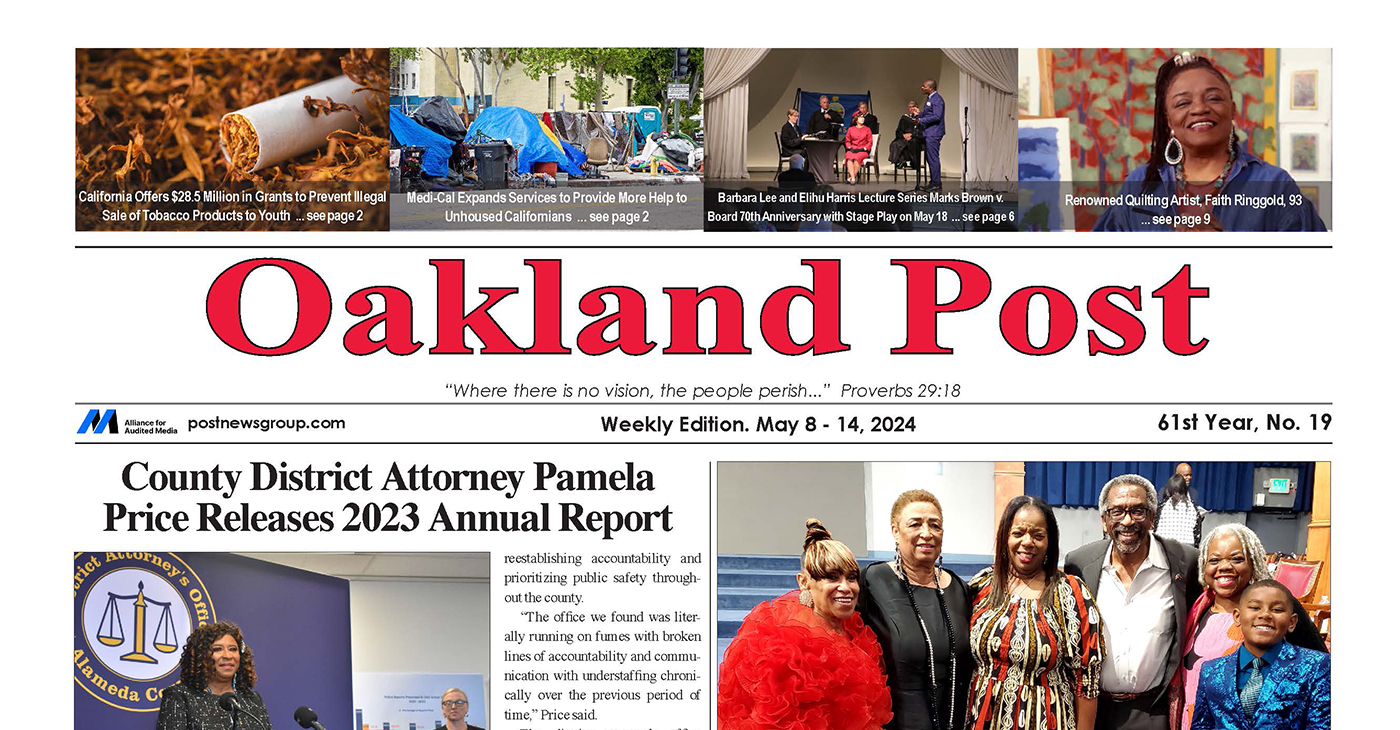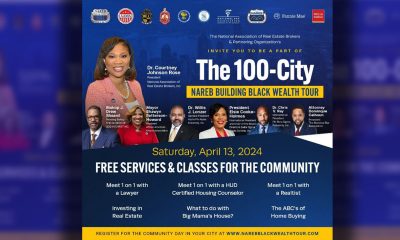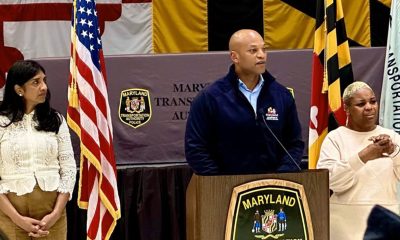Business
U.S. Home Sales Plunge 4.9 Percent in January
Josh Boak, ASSOCIATED PRESS
WASHINGTON (AP) — U.S. home sales struck a snow drift in January, plunging to the slowest pace in nine months.
The National Association of Realtors said Monday that sales of existing homes tumbled 4.9 percent last month to a seasonally adjusted annual rate of 4.82 million. That brings sales down to their lowest level since April 2014.
Relatively low mortgage rates and steady job growth have yet to spur more activity from buyers and sellers, raising the possibility of either a spring sales rush or a second straight year of numbness in the real estate market. Few properties are being listed for sale, would-be buyers are holding off on purchases and snowstorms are cutting into traffic at open houses.
Weak sales in 2014 had set up expectations of a strong rebound in 2015, yet signs of that resurgence have yet to appear. The addition of roughly 1 million new jobs over the past three months has failed to make much of a dent in home-buying.
Homes did sell at a rate 3.2 percent faster than January 2014, but that increase largely reflects the brutal winter weather at the beginning of last year that depressed home-buying and caused the entire U.S. economy to briefly shrink. The noticeably more robust U.S. economy coming into 2015 was supposed to buoy sales, but the market has barely stirred so far.
“The weather hit is nothing like the scale of the damage seen last winter, but we would not now be surprised to see a further decline in activity in February,” said Ian Shepherdson, chief economist at Pantheon Macroeconomics. “The underlying trend in sales is more or less flat.”
Few properties are coming onto the market. Just 4.7 months of supply were listed for sale at the end of December, compared with an average of 5.2 months during 2014, according to the Realtors.
Nor have builders ramped up construction. Housing starts slid 2 percent in January, according to a report from the Commerce Department last week.
The limited supply of homes can lift prices to higher levels, which may then lead would-be buyers to wait until they have more choices. Weekly mortgage applications fell 13.2 percent, the Mortgage Bankers Association reported last Wednesday.
Affordability has become a problem as prices have climbed at a faster clip than incomes. The national median home price rose 6.2 percent over the past 12 months to $199,600. That has priced out many first-time buyers, who represented just 28 percent of sales compared to their historic share of 40 percent.
Mother Nature is also beginning to take its toll. Nasty snowstorms in the Midwest and Northeast likely kept would-be buyers away, further crimping sales heading into March and beginning of the spring buying season.
Buyer traffic for newly built homes slowed in February, according to the National Association of Home Builders/Wells Fargo sentiment index.
The Realtors said previously in a separate report that the number of signed contracts in December fell 3.7 percent, suggesting that sales will remain under pressure in the coming months.
Sales slid in all four major geographical regions last month: dropping 6 percent in the Northeast, 2.7 percent in the Midwest, 4.6 percent in the South and 7.1 percent in the West.
Possibly hurting sales further, mortgage rates have crept upward for the past two weeks, ending what has previously been a yearlong slide.
Average 30-year fixed rates were 3.76 percent last week, according to the mortgage giant Freddie Mac. The average has risen from 3.59 percent at the start of February.
The current levels remain below the 4.33 percent average from a year ago, but the previous lows might keep current homeowners from upgrading since it would mean abandoning their current mortgage for a loan with possibly a higher rate and larger monthly payments.
Copyright 2015 The Associated Press. All rights reserved. This material may not be published, broadcast, rewritten or redistributed.
###
Activism
Oakland Post: Week of May 8 – 14, 2024
The printed Weekly Edition of the Oakland Post: Week of May May 8 – 14, 2024

To enlarge your view of this issue, use the slider, magnifying glass icon or full page icon in the lower right corner of the browser window. ![]()
Bay Area
Mayor Breed Proposes Waiving City Fees for Night Markets, Block Parties, Farmers’ Markets, Other Outdoor Community Events
Mayor London N. Breed introduced legislation on April 26 to encourage and expand outdoor community events. The first will waive City fees for certain events, making them less costly to produce. The second will simplify the health permitting for special event food vendors through the creation of an annual permit. Both pieces of legislation are part of the Mayor’s broader initiative to bring vibrancy and entertainment to San Francisco’s public right of ways and spaces.

Mayor’s Press Office
Mayor London N. Breed introduced legislation on April 26 to encourage and expand outdoor community events.
The first will waive City fees for certain events, making them less costly to produce. The second will simplify the health permitting for special event food vendors through the creation of an annual permit. Both pieces of legislation are part of the Mayor’s broader initiative to bring vibrancy and entertainment to San Francisco’s public right of ways and spaces.
Outdoor community events are integral to San Francisco’s vibrant culture and sense of community. These events include night markets, neighborhood block parties and farmers markets, and bolster the City’s economy by supporting local businesses and attracting tourists eager to experience San Francisco’s unique charm and food scene.
They offer residents, workers and visitors, opportunities to engage with local artists, musicians, and food vendors while enjoying the San Francisco’s stunning outdoor spaces and commercial corridors.
The legislation will allow for more and new community gatherings and for local food vendors to benefit from the City’s revitalization.
“San Francisco is alive when our streets are filled with festivals, markets, and community events,” said Breed. “As a city we can cut fees and streamline rules so our communities can bring joy and excitement into our streets and help revitalize San Francisco.”
Fee Waiver Legislation
The events that can take advantage of the new fee waivers are those that are free and open to the public, occupy three or fewer city blocks, take place between 8 a.m. and 10 p.m., and have the appropriate permitting from the ISCOTT and the Entertainment Commission.
The applicant must be a San Francisco based non-profit, small business, Community Benefit District, Business Improvement District, or a neighborhood or merchant association. Fees eligible for waiver include any application, permit, and inspection/staffing fees from San Francisco Municipal Transportation Agency, Department of Public Health, Fire Department, Entertainment Commission, and Police Department.
Currently, it can cost roughly anywhere between $500-$10,000 to obtain permits for organized events or fairs, depending on its size and scope. Organizations and businesses are limited to a maximum of 12 events in one calendar year for which they can receive these fee waivers.
Food Vendor Streamlining Legislation
The second piece of legislation introduced will help special event food vendors easily participate in multiple events throughout the year with a new, cost-effective annual food permit. Food vendors who participate in multiple events at multiple locations throughout the year will no longer need to obtain a separate permit for each event. Instead, special event food vendors will be able to apply and pay for a single annual permit all at once.
“Many successful food businesses either begin as pop-up vendors or participate in special events to grow their business,” says Katy Tang, Director of the Office of Small Business. “Giving them the option for an annual special event food permit saves them time and money.”
Currently, food vendors are required to get a Temporary Food Facility (TFF) permit from the Department of Public Health (DPH) in order to participate in a special event, among permits from other departments.
Currently, each special event requires a new permit from DPH ranging from $124-$244, depending on the type of food being prepared and sold. Last year, DPH issued over 1,500 individual TFF permits. With the new annual permit, food vendors selling at more than four to six events each year will benefit from hundreds of dollars in savings and time saved from fewer bureaucratic processes.
“This legislation is a step in the right direction to make it easier for food vendors like me to participate in citywide events,” said Dontaye Ball, owner of Gumbo Social. “It saves on time, money and makes it more effective. It also creates a level of equity.”
Bay Area
Faces Around the Bay: Sidney Carey
Sidney Carey was born in Dallas, Texas. He moved with his family to West Oakland as a baby. His sister is deceased; one brother lives in Oakland. Carey was the Choir Director at Trinity Missionary Baptist Church for 18 years.

By Barbara Fluhrer
Sidney Carey was born in Dallas, Texas. He moved with his family to West Oakland as a baby. His sister is deceased; one brother lives in Oakland.
Carey was the Choir Director at Trinity Missionary Baptist Church for 18 years.
He graduated from McClymonds High with a scholarship in cosmetology and was the first African American to complete a nine-month course at the first Black Beauty School in Oakland: Charm Beauty College.
He earned his License, and then attended U.C., earning a secondary teaching credential. With his Instructors License, he went on to teach at Laney College, San Mateo College, Skyline and Universal Beauty College in Pinole, among others.
Carey was the first African American hair stylist at Joseph and I. Magnin department store in Oakland and in San Francisco, where he managed the hair stylist department, Shear Heaven.
In 2009, he quit teaching and was diagnosed with Congestive Heart Failure. He was 60 and “too old for a heart transplant”. His doctors at California Pacific Medical Center (CPMC) went to court and fought successfully for his right to receive a transplant. One day, he received a call from CPMC, “Be here in one hour.” He underwent a transplant with a heart from a 25-year- old man in Vienna, Austria
Two years later, Carey resumed teaching at Laney College, finally retiring in 2012.
Now, he’s slowed down and comfortable in a Senior Residence in Berkeley, but still manages to fit his 6/4” frame in his 2002 Toyota and drive to family gatherings in Oakland and San Leandro and an occasional Four Seasons Arts concert.
He does his own shopping and cooking and uses Para Transit to keep constant doctor appointments while keeping up with anti-rejection meds. He often travels with doctors as a model of a successful heart-transplant plant recipient: 14 years.
Carey says, “I’m blessed” and, to the youth, “Don’t give up on your dreams!”
-

 City Government1 week ago
City Government1 week agoCourt Throws Out Law That Allowed Californians to Build Duplexes, Triplexes and RDUs on Their Properties
-

 Community4 weeks ago
Community4 weeks agoFinancial Assistance Bill for Descendants of Enslaved Persons to Help Them Purchase, Own, or Maintain a Home
-

 Activism3 weeks ago
Activism3 weeks agoOakland Post: Week of April 24 – 30, 2024
-

 Business4 weeks ago
Business4 weeks agoV.P. Kamala Harris: Americans With Criminal Records Will Soon Be Eligible for SBA Loans
-

 Community3 weeks ago
Community3 weeks agoOakland WNBA Player to be Inducted Into Hall of Fame
-

 Community4 weeks ago
Community4 weeks agoAG Bonta Says Oakland School Leaders Should Comply with State Laws to Avoid ‘Disparate Harm’ When Closing or Merging Schools
-

 Community3 weeks ago
Community3 weeks agoRichmond Nonprofit Helps Ex-Felons Get Back on Their Feet
-

 Community3 weeks ago
Community3 weeks agoRPAL to Rename Technology Center for Retired Police Captain Arthur Lee Johnson























































